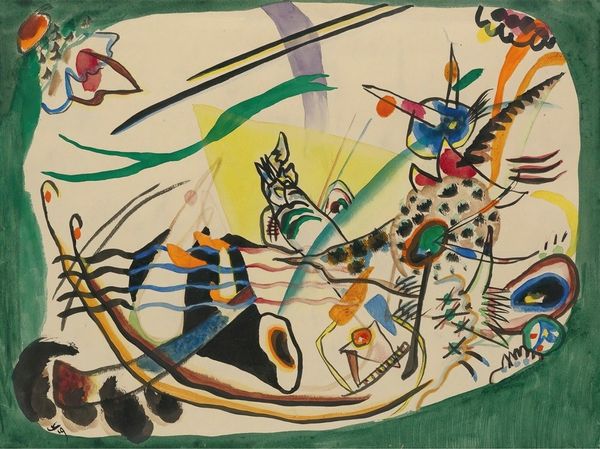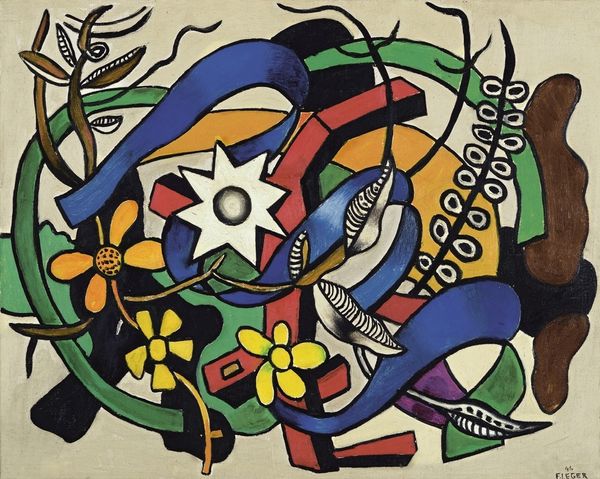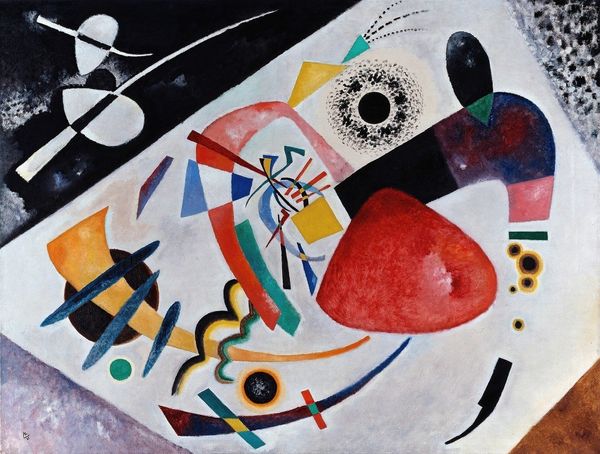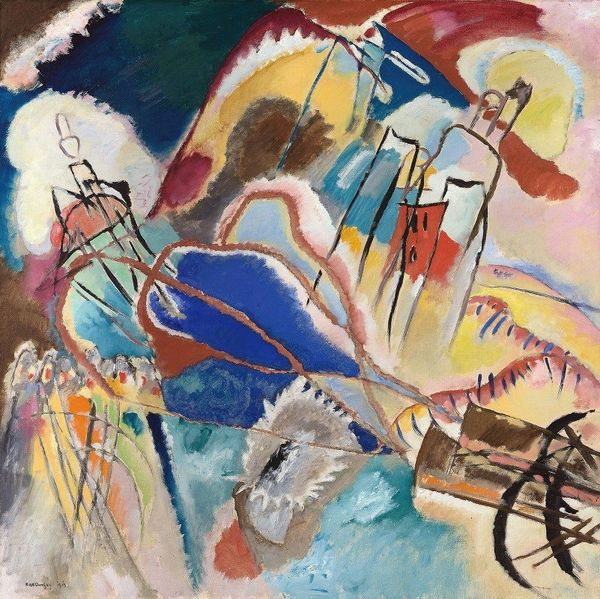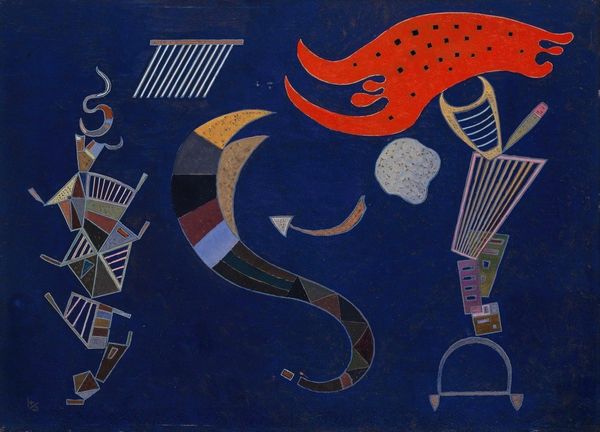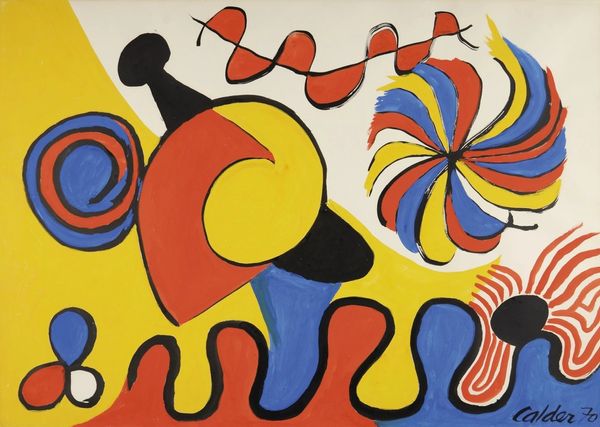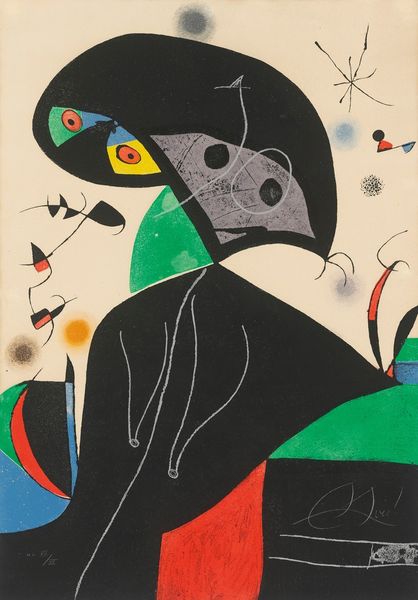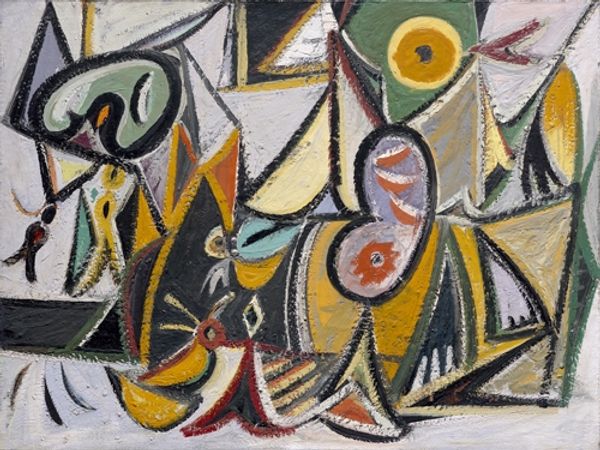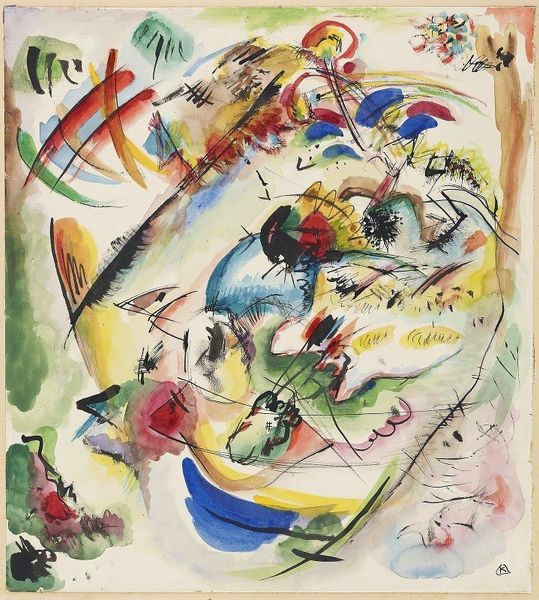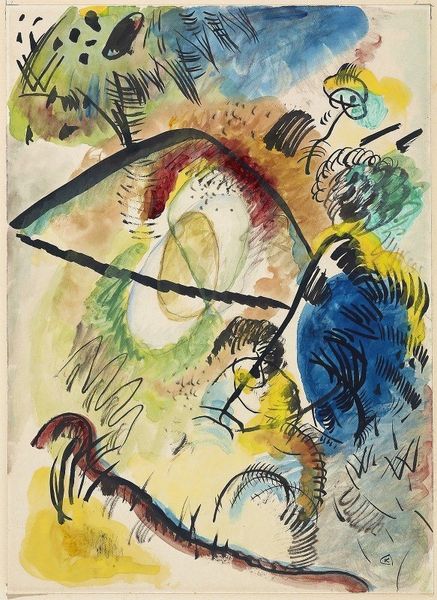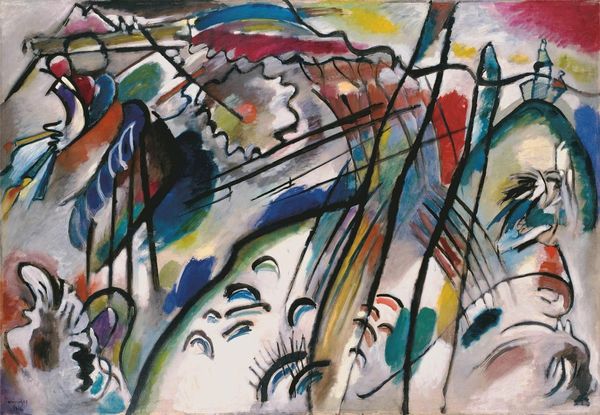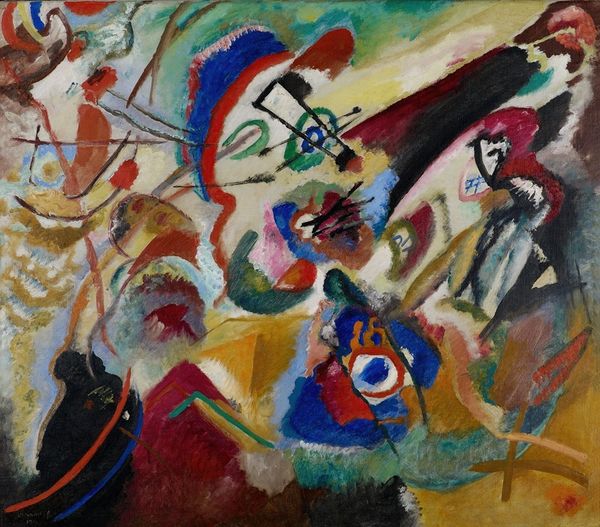
Copyright: Public domain
Curator: Let's turn our attention to Wassily Kandinsky's "Blue Segment," painted in 1921. It's currently housed right here at the Guggenheim. Editor: Immediately, the painting gives me the sense of a dynamic interplay between order and chaos, doesn't it? There's such a wonderful layering of geometric forms and colours. Curator: Precisely. And in terms of the materials, Kandinsky was primarily concerned with the interplay between the physical act of painting and the transcendent possibilities of the canvas itself, pushing the boundaries of visual expression through this assembly of materials and methods. Editor: It's hard not to see the historical context—this was post-World War I. So the angular shapes, that seeming chaos… how do you interpret this from the lens of cultural memory? Curator: I find that in this early post-revolutionary period in Russia and then Germany, Kandinsky became increasingly interested in how abstraction could offer a universal language of spiritual expression that transcended cultural and political boundaries. Editor: Considering the materiality and the historical period, doesn’t the seeming weightlessness of the floating geometric shapes almost belie the weight of that history, the potential brutality inherent in a period of great shifts in manufacturing and modes of production? Curator: Absolutely. The "Blue Segment" is emblematic of modernism, that bold experimentation, the attempt to capture emotion in pure form—lines and colors. Its lasting impact is tied not only to his materials but to his challenge of visuality. Editor: Seeing "Blue Segment" and thinking about how those stark lines and the raw materials work, it feels right that his practice sought to represent both turmoil and utopia through its particular means of making. Curator: Indeed, looking closely reminds us of the powerful way abstraction can communicate and even shape our understanding of history and experience. Editor: A very solid conclusion to complement our analysis, and it allows for reflecting on all sorts of aesthetic dimensions and the social dynamics in production that come into play when we perceive or describe artistic labor.
Comments
No comments
Be the first to comment and join the conversation on the ultimate creative platform.
